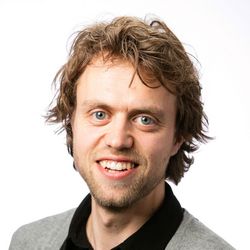Spatial Quality Framework Wadden Sea Dyke: integrated approach with respect for the local environment
The Wetterskip Fryslân water authority aims to strengthen a large portion of the Wadden Sea dyke in the coming years. The local water authority is keen to have an integrated and participatory approach to the project due to the multifunctional role that the area plays for various stakeholders. Witteveen+Bos translated this wish into a Spatial Quality Framework, based on the knowledge and aspirations of the stakeholders, with a focus on water safety, nature, agriculture and the living environment. The result is a solid foundation for quality and support.
The dyke in question extends over a length of 47 kilometres, from Koehool to Lauwersmeer. The latest safety assessment indicated that parts of the dyke are not actually future-proof, seeing that some areas of the dyke’s revetment and stability no longer measure up to the task.
The area concerned is quite extensive and fulfils multiple functions: not only the dyke itself, but also a wide strip around the dyke, including valuable salt marshes, agricultural polders and centuries-old villages such as Paesens and Moddergat.
The dyke is also embedded in a beautiful and ancient cultural landscape, dating back to the eleventh century. Spatial quality considerations, which include the area’s ecology, agriculture and landscape, are therefore important for ensuring an integrated assessment aimed at strengthening the dyke.
Integrated approach
In view of the broad scope of the dyke reinforcement project, the Wetterskip Fryslân water authority has opted for an integrated approach. To achieve this, Witteveen+Bos has drawn up a proposal in which the major stakeholders in the area – the water authority, the provincial government of Friesland, Rijkswaterstaat, the municipalities of Noardeast-Fryslân and Waadhoeke, and the agricultural and land management organisations – are co-owners of the project.
Each of these parties used their specific expertise to provide input aimed at safeguarding spatial quality and landscape integration. This took place in a special working group, supported by the landscape architects of Witteveen+Bos. The results of the working group are set out in a Spatial Quality Framework. This document contains a collection of the most important quality attributes of the area and a vision with design principles, forming an assessment framework for spatial quality for the dyke reinforcement solution.
Spatial Quality Framework
The stakeholders in the area jointly set out the following ambition aimed at safeguarding spatial quality: ‘Along the Wadden Sea coastline, various issues and responsibilities at national level (such as climate adaptation, sustainable energy, mining and nature), at provincial level (such as spatial planning), at municipal level (such as quality of life and the regional economy) and at water authority level (such as water safety and water systems) come together with the various ambitions and expectations of social enterprises, private companies and the general public.’
The Spatial Quality Framework contributes to the above-mentioned integrated solution for a complex and large-scale dyke reinforcement. The plan adopted an integrated approach and provided a cohesive solution to the spatial issues and responsibilities in the areas of water safety, nature, agriculture and the living environment. Attention, for example, was paid to the integration of local housing on the dyke, transitions between different revetment facing materials of the dyke, the connection with the natural salt-marsh landscape and the integration of cycle routes and other facilities such as recreational resting points. In short, integration and participation are indispensable when it comes to reconciling the wide variety of challenges and bringing the project to a successful conclusion.
Share this project
Contact
